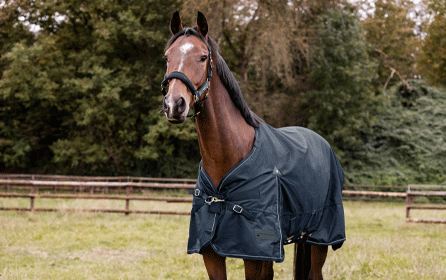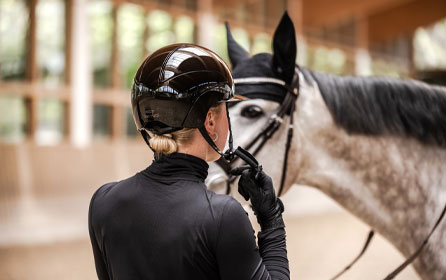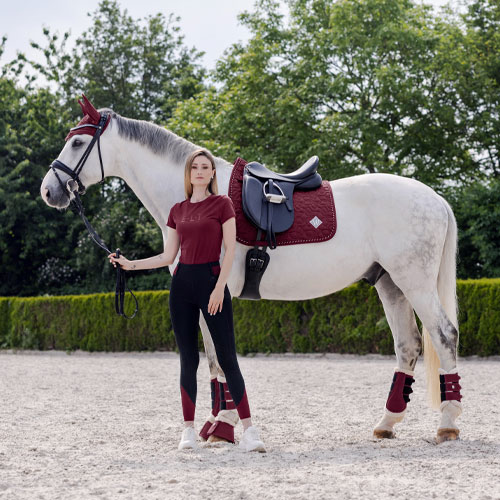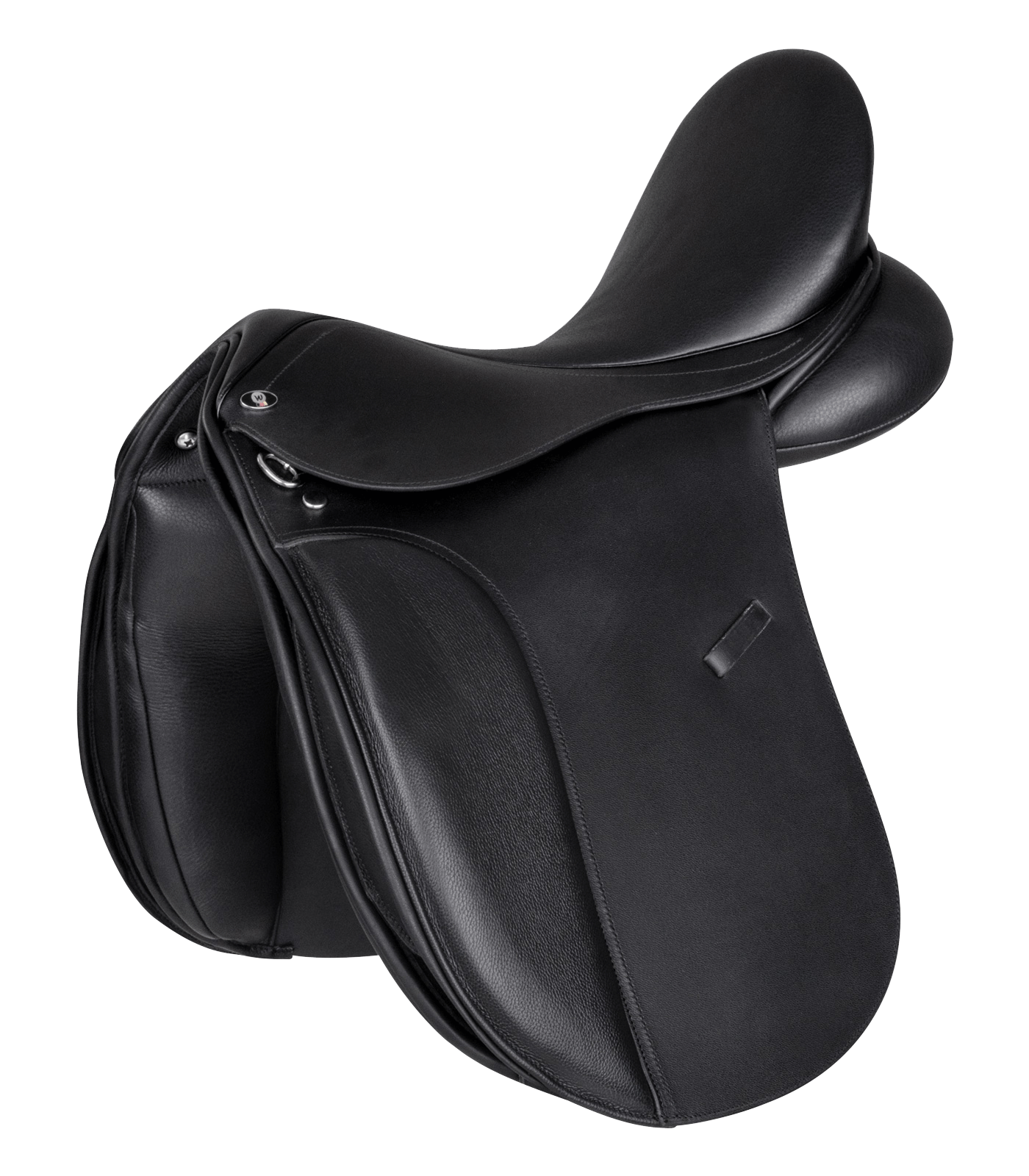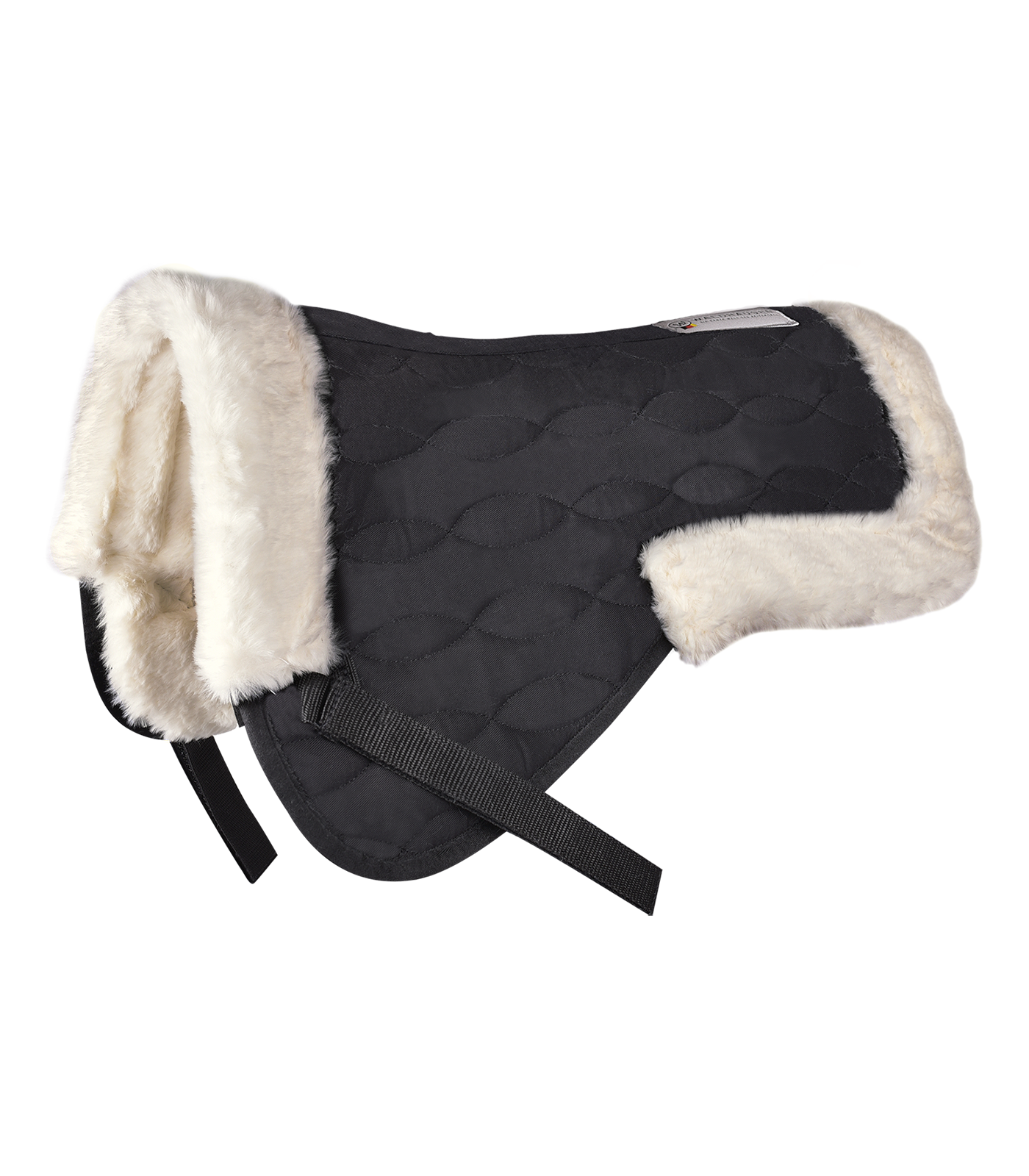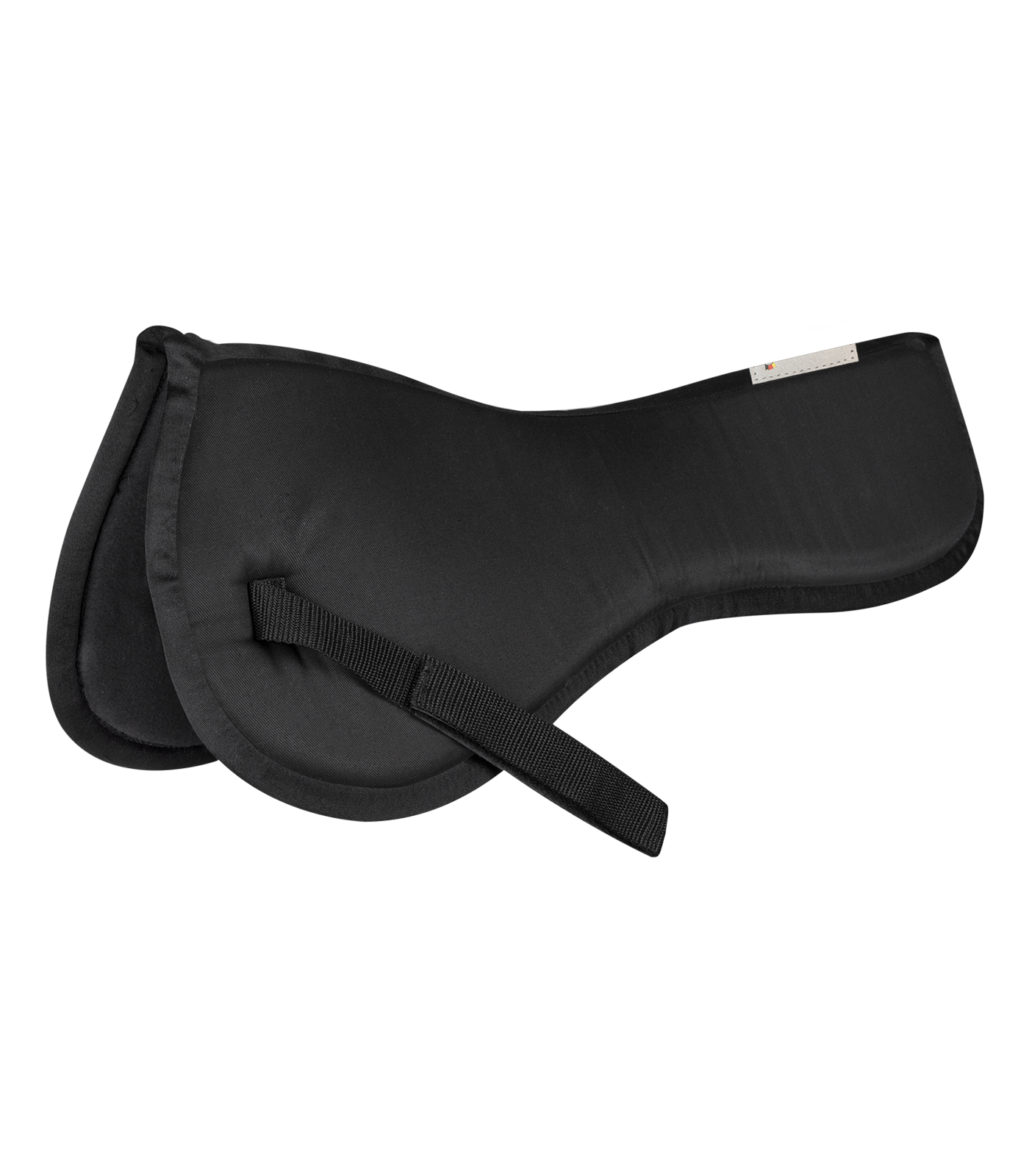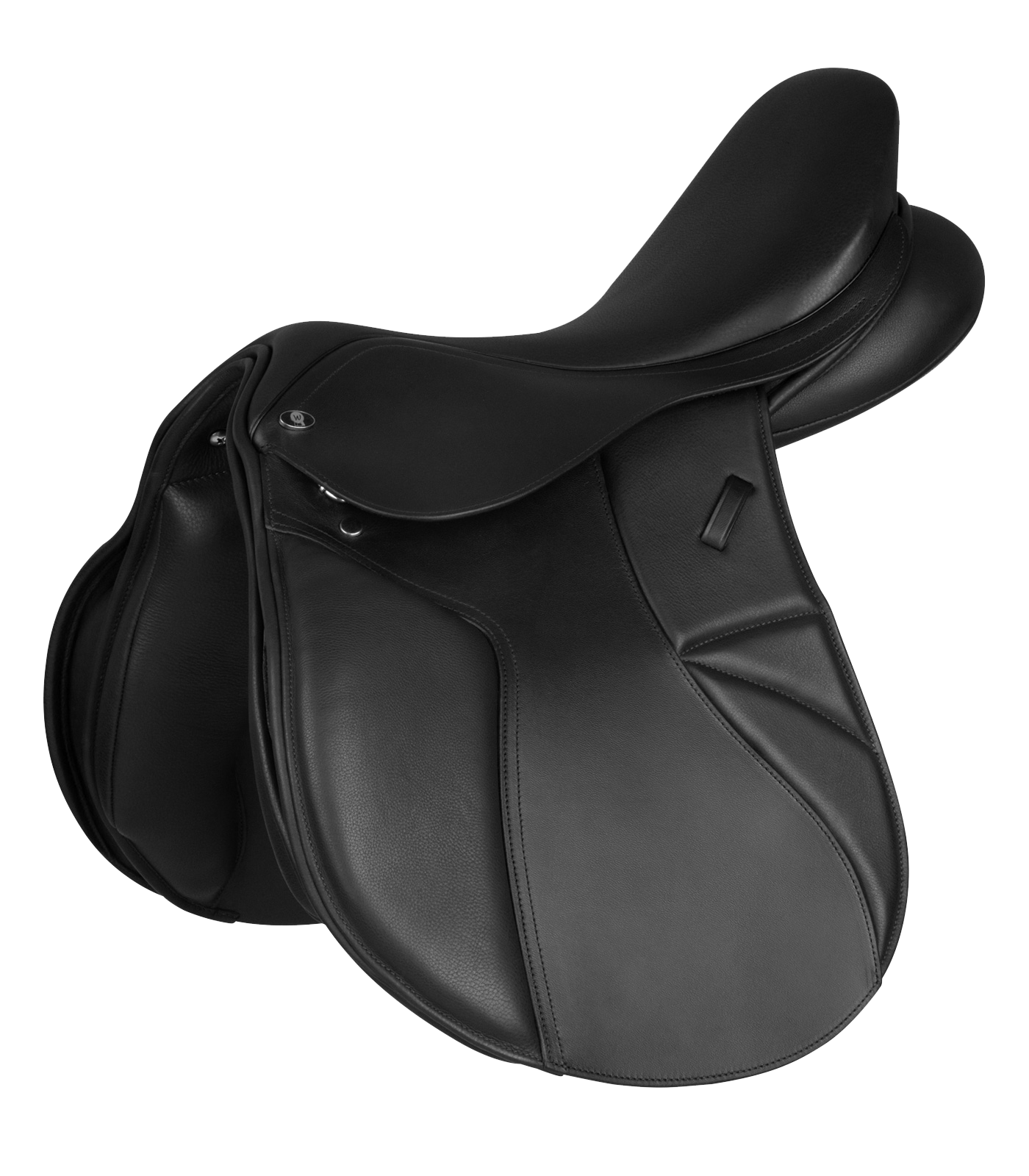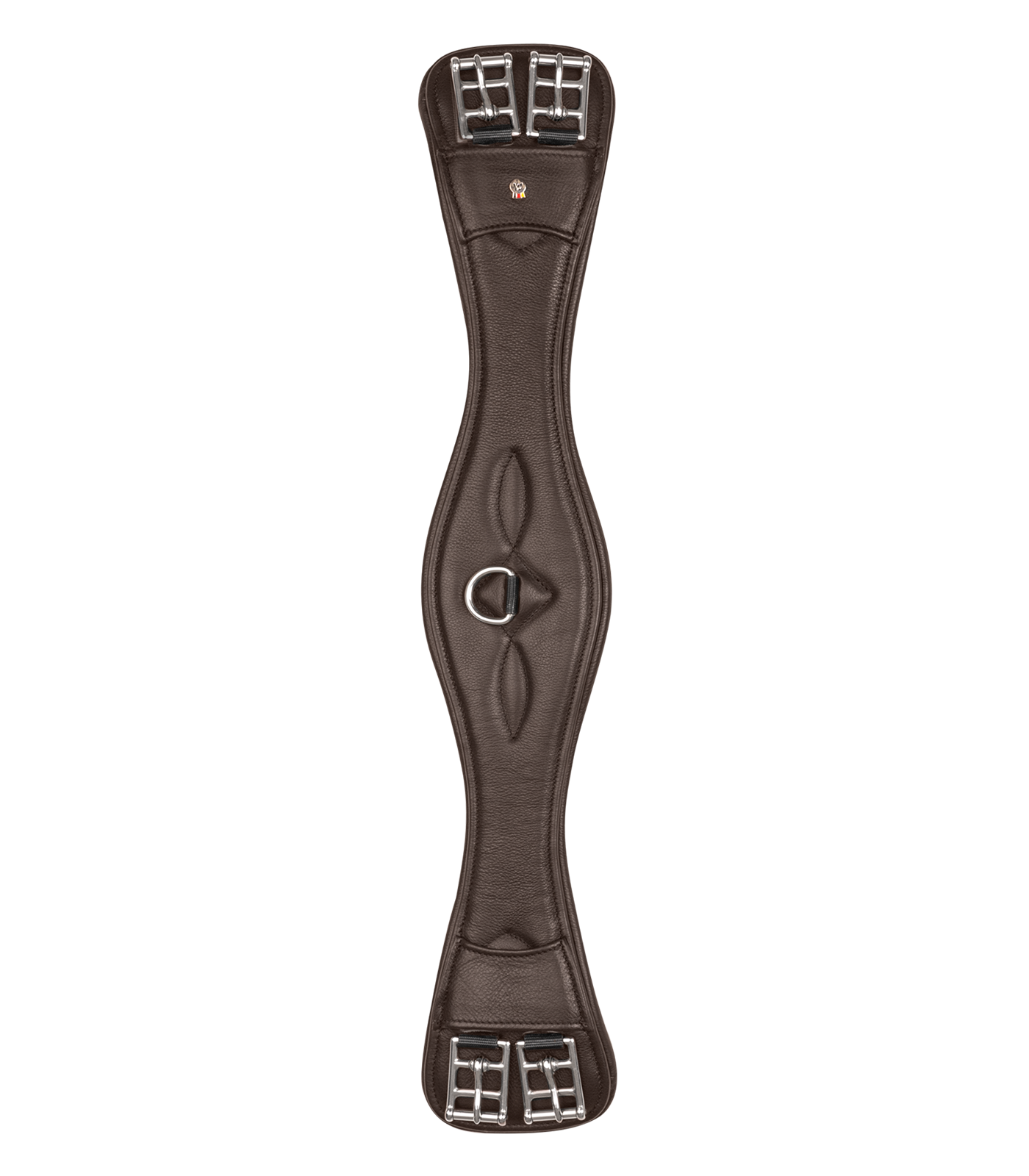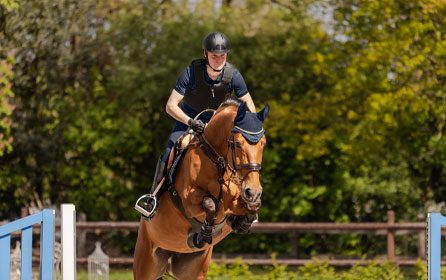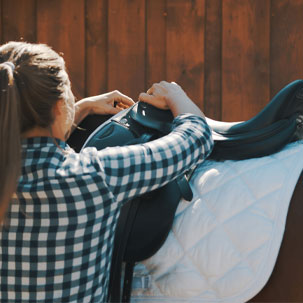
A proper saddle fit is essential for both horse and rider. For the horse, the saddle has a major impact on freedom of movement, back health, and the distribution of the rider’s weight. For riders, the saddle can determine how secure their seat and balance feel. So, it’s not just about whether the saddle sits well on the horse, but also how well it suits the rider.
The correct position of the saddle on the horse's back
If you’re looking to get a saddle for your horse, it’s a good to seek professional advice. The criteria described below cannot universally determine whether a saddle fits the individual horse in a given situation. Therefore, we recommend combining theoretical knowledge with a professional saddle fitting. Saddle fittings are excellent opportunities to test different models. During the saddle fitting, the following areas of your horse should be examined: the scapula, withers, spine, and back muscles.
A template is used to measure the withers of the horse, which helps determine the gullet width. The spinal canal of the horse must remain clear to avoid putting pressure on the spine with the saddle. There should be enough space between the saddle and the withers—at least enough to fit your whole hand in the gap. The saddle tree is designed to distribute pressure evenly, so your weight does not rest on a single point on the horse’s back but is distributed gently. When you run your hand along the saddle flaps, the shoulder blades should be free. A saddle that sits too far forward and rests on the shoulders can restrict the horse’s freedom of movement. Therefore, spinal and shoulder freedom are crucial for a properly fitting saddle.
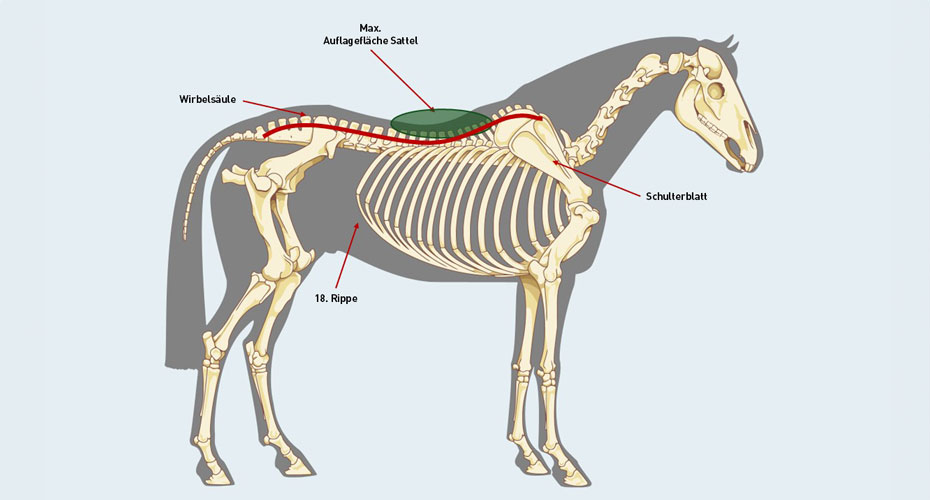

Saddle length
By running your fingertips down from the end of the mane, you can feel the shoulder cartilage of your horse. The saddle should not extend beyond this point. At the highest point of the hindquarters, you can feel the pelvic bone and carefully continue feeling until you locate the last rib. The saddle must end at the point where the large back muscle begins from the last rib. No pressure should be placed further back. The distance from the shoulder cartilage to the rib point defines the maximum saddle length.
Size and weight
The seat size is measured from the saddle nail (the round buttons at the front of the saddle) to the cantle (the rear of the saddle), usually in inches. Depending on the rider’s weight and height, the seat should allow for ample freedom of movement for the seat and even weight distribution.
Fitting seat size
You can quickly determine if your saddle has an appropriate seat size by trying it out. The weight should be centered rather than shifted back so that your hips can roll freely and your pelvis can move flexibly with the horse's motion. If your seat is too far back, it puts too much pressure on the rear part of the saddle. Ideally, there should be enough space for about three fingers between your seat and the top edge of the saddle. Your thighs should comfortably rest against the saddle flaps, and your knees should not extend beyond the edge of the saddle. Feeling completely enclosed and held in place would create a false sense of security. The length of the saddle flaps should be adjusted so that your boots cannot get caught underneath them.
Even weight distribution over the saddle panels
Your ideal saddle distributes your weight evenly over the contact area on the horse’s back and should sit without rocking.

Which saddle is right for you?
Whether a saddle fits is not only determined by the horse's body but also significantly influenced by the rider's body. You should feel secure, yet not confined; balanced, yet not squeezed. Then there’s the question of how the saddle will be used and the discipline in which you ride. There are a variety of saddle models for different purposes. Jumping, eventing, and dressage saddles are the classics of English riding, while western saddles are used in Western riding. The range is quite extensive, including trail riding, Icelandic, or Spanish saddles, just to name a few. A saddle that meets the needs of your riding style and accommodates both your body and your horse's body is ideal!
Different components of a saddle and their significance
The saddle tree is crucial for the basic stability of the saddle and should not only be highly durable but also adapted to the shape of the horse’s back. A combination of form and flexibility is essential. A saddle chamber tailored to the horse’s body ensures freedom at the shoulders and withers. If the saddle chamber is too narrow, it can cause uncomfortable pressure points, significantly restrict the horse's freedom of movement, and lead to saddle pressure. The padding serves to maximize shoulder freedom and distribute pressure evenly.
Finding the perfect saddle and accessoires for you and your horse
The authors
